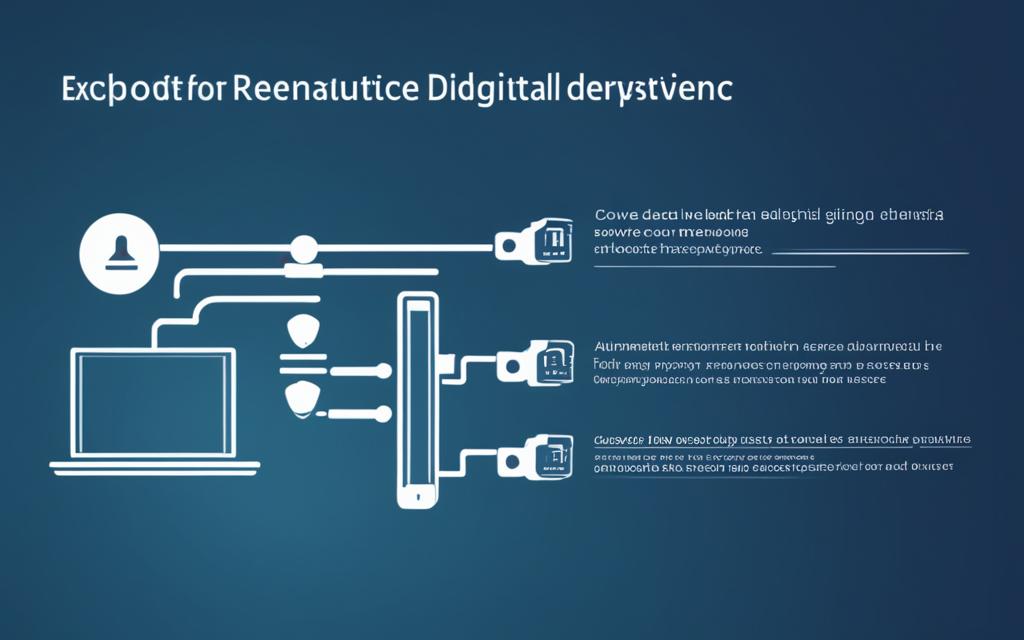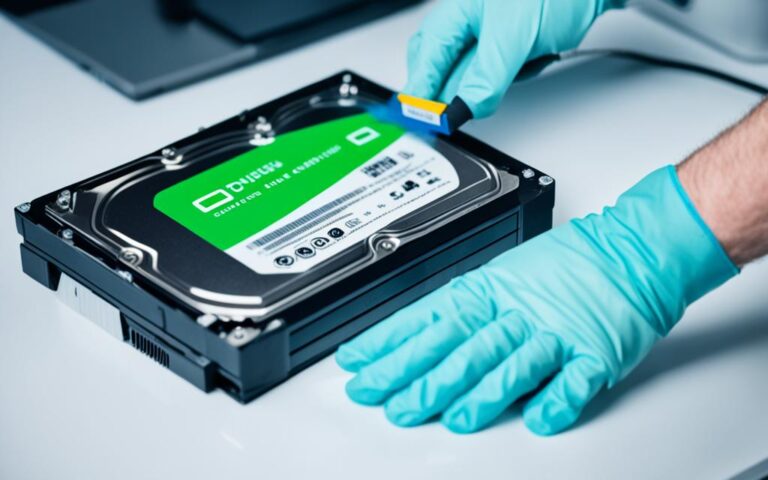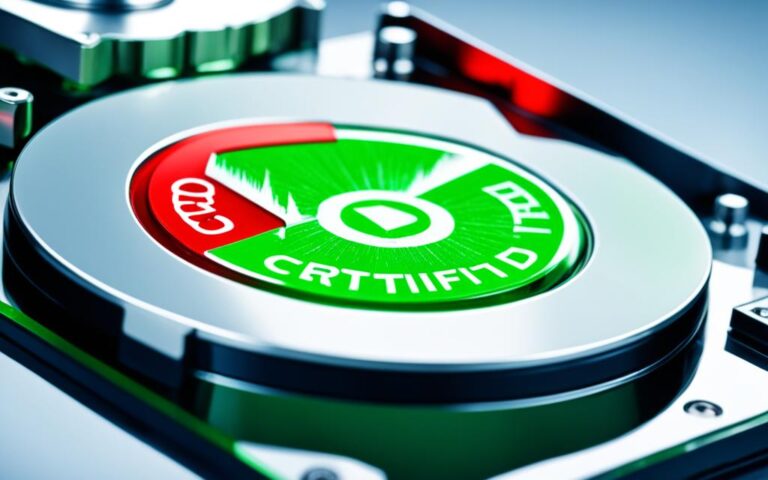Strategies for Effective Data Obliteration
Data obliteration, also known as data destruction, is a crucial process for safeguarding sensitive information and protecting data integrity. It involves rendering data completely irretrievable, ensuring that it does not fall into the wrong hands. There are various methods of data obliteration available, each with its own pros and cons. It is important for businesses to choose the most effective and secure method based on factors such as time, cost, and validation/certification requirements. Data obliteration is particularly important in industries with legal requirements or regulatory issues. Failure to properly destroy data can lead to significant consequences, such as financial penalties and damage to the business’s reputation. It is essential for companies to understand the different types of data obliteration and choose the best method for their specific needs.
Secure methods of data obliteration can safeguard privacy and protect data integrity, ensuring compliance with regulatory requirements.
The Importance of Data Destruction
Data destruction is a critical process for businesses of all sizes. In today’s digital age, where companies rely heavily on electronic media for their operations, it is essential to ensure the secure protection of all data created by these devices.
At the end of a device’s life cycle, proper data destruction is necessary to prevent others from accessing the data. Failure to destroy data can have catastrophic consequences, as evidenced by instances where residual data was found on hard drives that were not properly wiped. This poses a significant risk of data recovery and potential misuse, exposing businesses to severe breaches of confidentiality and privacy. It’s not just individuals but also organizations that need to be mindful of data destruction.
Non-compliance with data destruction regulations can result in significant financial and legal repercussions. For example, Morgan Stanley Wealth Management faced substantial fines for failing to dispose of old data storage devices properly. Compliance with legal requirements is crucial to avoid penalties and uphold customer trust.
To illustrate the importance of data destruction, consider the case of a financial institution that disposes of old computer systems without securely destroying the data stored on the hard drives. If these old systems were to fall into the wrong hands, it could lead to unauthorized access, identity theft, and financial fraud. The potential consequences are far-reaching and can devastatingly impact not only businesses but also individuals whose data is compromised.
Choosing the best method for data destruction is imperative. Businesses must assess their specific needs and regulatory requirements to determine the most suitable approach. It’s essential to evaluate factors such as effectiveness, efficiency, and compliance with legal standards when selecting a data destruction method.
The Risks of Inadequate Data Destruction
Residual data left on improperly wiped or disposed of devices can be recovered using specialized software or techniques. This residual data may include sensitive information such as financial records, customer data, proprietary information, or trade secrets. In the wrong hands, this information can result in severe financial and reputational damage for businesses.
Compliance with Legal Requirements
Various laws and regulations govern data protection and destruction, such as the General Data Protection Regulation (GDPR) in the European Union or the Data Protection Act in the United Kingdom. These laws impose specific obligations on businesses regarding data security and destruction. Failure to comply can lead to legal actions and hefty penalties.
Ensuring compliance with legal requirements is essential for protecting both the business and its customers. It demonstrates a commitment to safeguarding data and maintaining a strong reputation for privacy and security.
The Importance of Secure Destruction Methods
There are several secure and effective data destruction methods available, including physical destruction, degaussing, overwriting, and erasing. Each method has its advantages and best use cases. Organizations should carefully evaluate these options to determine the most appropriate method for their needs.
| Data Destruction Method | Advantages | Disadvantages |
|---|---|---|
| Physical destruction (shredding or smashing) | – Ensures complete destruction of data – Can be suitable for media with high data sensitivity, like physical hard drives |
– Can be costly – Environmental impact of electronic waste disposal |
| Degaussing | – Effective for magnetic media – Renders data unreadable |
– Limited to magnetic media only – Requires specialized equipment |
| Overwriting | – Allows for data reuse – Cost-effective method |
– Requires thorough and multiple overwriting passes for complete destruction – Time-consuming for large volumes of data |
| Erasing | – Secure method to delete data – Can be performed remotely |
– Effectiveness depends on the software used – May leave traces of residual data |
While the choice of method depends on factors such as security requirements, cost, and environmental impact, it is crucial to prioritize secure and verified data destruction methods to ensure the complete elimination of sensitive information.
Closing Thoughts
Data destruction is not a mere formality but a fundamental step in safeguarding sensitive information and protecting businesses and individuals from the catastrophic consequences of data breaches. By prioritizing secure data destruction methods and complying with legal requirements, businesses can mitigate the risk of data recovery, protect their reputation, and preserve the trust of their customers.
Different Types of Data Destruction
When it comes to data destruction, there are several methods available, each with its own advantages and disadvantages. It’s important for businesses to understand these different types of data destruction to choose the method that best suits their needs and requirements. Let’s explore some of the most common methods:
1. Deleting/Reformatting
Deleting or reformatting is the most basic method of data destruction. It removes the data from the visible file system, but the information remains intact on the device’s memory chip or hard drive. This means that with the right tools, the data can still be recovered. Therefore, this method is not suitable for secure data obliteration.
2. Wiping
Data wiping involves overwriting the data on an electronic medium, making it unreadable. This process ensures that the original data cannot be recovered. However, wiping can be time-consuming, especially for businesses with multiple devices to wipe.
3. Overwriting Data
Overwriting data is a similar process to wiping, but it involves writing random or set patterns of ones and zeroes over the existing data. This method ensures that the original data is completely destroyed, making it unrecoverable. The process can be time-consuming but is highly effective in ensuring data destruction.
4. Erasing
Erasing is another term for overwriting the data. This method ensures the complete destruction of all data on a hard drive, leaving no traces behind. It is a secure and reliable method for data obliteration.
5. Degaussing
Degaussing is a method that uses a high-powered magnet to destroy the magnetism of an electronic medium, rendering it inoperable. It completely wipes the data and makes it impossible to recover. However, degaussing is primarily used for magnetic media, such as floppy disks and magnetic tapes, and is less commonly used for solid-state drives.
6. Physical Destruction
Physical destruction involves physically damaging the device to ensure data destruction. This can include smashing a hard drive or shredding it into small pieces. It is an efficient way to guarantee that the data is completely destroyed. However, physical destruction can be costly and has environmental implications due to the disposal of electronic waste.
Below is a table summarizing the different types of data destruction methods:
| Data Destruction Method | Advantages | Disadvantages |
|---|---|---|
| Deleting/Reformatting | – Quick and easy method – Does not require additional equipment |
– Data can still be recovered – Not suitable for secure data obliteration |
| Wiping | – Data is overwritten, making it unreadable – Suitable for various electronic media |
– Can be time-consuming for multiple devices – Requires specialized software |
| Overwriting Data | – Ensures complete destruction of data – High level of security |
– Time-consuming – Requires specialized software |
| Erasing | – Data is completely destroyed – Reliable method for data obliteration |
– Requires specialized software – Time-consuming for large data sets |
| Degaussing | – Destroys magnetic media effectively – Suitable for floppy disks and magnetic tapes |
– Less commonly used for solid-state drives – Requires specialized equipment |
| Physical Destruction | – Guarantees complete data destruction – No chance of data recovery |
– Costly – Environmental implications |
It is essential for businesses to carefully consider the pros and cons of each data destruction method and choose the one that aligns with their needs, compliance requirements, and available resources.
Best Practices for Data Obliteration
Implementing effective data obliteration practices requires a comprehensive data protection strategy. This strategy should include explicit protocols for data management, storage, and disposal.
To protect against data threats, businesses should:
- Secure their wireless networks
- Use strong passwords
- Regularly update software and apply patches
- Utilize secure cloud storage and backup services
Educating employees about the importance of data security and providing ongoing training on emerging threats and best practices is crucial. By creating a culture of security awareness and promoting compliance with data protection regulations, businesses can significantly reduce the risk of data breaches and other security incidents.
Conclusion
Data security is of utmost importance for businesses seeking comprehensive protection and effective risk management. The proper implementation of data obliteration methods is crucial in ensuring compliance with data protection regulations and preventing data breaches. By prioritizing data security and following best practices, companies can safeguard the privacy and integrity of their valuable data.
Understanding the significance of data destruction is the first step towards creating a secure environment. Businesses should be aware of the different data obliteration methods available and select the most suitable approach for their specific needs. Whether it’s securely wiping data, overwriting, degaussing, or physically destroying electronic media, each method offers its advantages and considerations.
Creating a comprehensive data protection strategy is essential for mitigating risks. This includes securing wireless networks, using strong passwords, implementing automatic software updates, and ensuring secure cloud storage. In addition, educating employees on data security practices and compliance requirements empowers them to be an integral part of the organization’s defense against data breaches.
By adhering to these guidelines, businesses can minimize the risk of data breaches, protect their reputation, and demonstrate compliance with data protection standards. Data security is an ongoing effort, and continued vigilance is necessary to stay ahead of evolving security threats. With comprehensive protection measures in place, companies can confidently navigate the digital landscape while safeguarding their most valuable asset – data.
FAQ
What is data obliteration?
Data obliteration, also known as data destruction, is the process of rendering data completely irretrievable, ensuring that it does not fall into the wrong hands.
Why is data destruction important?
Data destruction is important to safeguard sensitive information, protect data integrity, and comply with legal requirements or regulatory issues.
What are the different types of data destruction methods?
The different types of data destruction methods include deleting/reformatting, wiping, overwriting data, erasing, degaussing, and physical destruction.
How does data wiping work?
Data wiping involves overwriting the data on an electronic medium, making it unreadable. It ensures the complete destruction of all data on a hard drive.
What is the most efficient way to ensure data destruction?
Physical destruction, such as smashing a hard drive or shredding it, is an efficient way to ensure data destruction, although it can be costly and have environmental implications.
What are the best practices for data obliteration?
Best practices for data obliteration include implementing a comprehensive data protection strategy, securing wireless networks, using strong passwords, regularly updating software, employing secure cloud storage, and providing ongoing employee education on data security.













